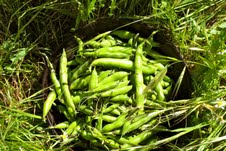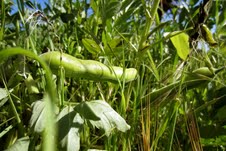They have finally arrived. I’ve waited eleven whole months just to have them. I’ve refused the out of season frauds. Sure, the frauds are produced all year long and come in a perfect round shape. But they are flavorless, and injected with industrial pesticides and fertilizers. And they are grown in plastic houses in the winter, completely against Mother Nature’s will. It was early July in Palestine, and there they were at the farmers market. I picked up an entire bucket of the ripe, heterogeneously shaped fruits. I should probably pick up another bucket or two this week before the harvest is complete. Baladi (local and heirloom) tomatoes are a treat in today’s Palestine. Although baladi tomatoes were the only kind of tomatoes available in Palestine twenty years ago, they are becoming more rare. The influx of industrial agriculture in Palestine has transformed much of our food production from a family-run-seasonal-and-organic-baladi operation to a non-seasonal-using-non-organic-fertilizers-and–embracing-foreign-seeds agri-business. Thank goodness that there are still farmers who maintain traditional Palestinian farming saving seeds each year, respecting the land by feeding her natural organic waste and cultivating crops according to their season. I try to buy as many baladi tomatoes as I can get my hands on. I eat some fresh, and I dry the rest for eating during the rest of the year.
Tomato-Onion Salad
1 serving
1 medium tomato, sliced
¼ red onion, thinly sliced
chopped basil (as much as you want)
1 teaspoon olive oil
1 teaspoon of your favorite vinegar
a pinch of salt for taste
Mix all the ingredients and enjoy!
*******************************************************************************
Roasted Tomato and Zucchini
Sliced Tomatoes (as much as you want to roast)
Sliced Zucchini (as much as you want to roast)
Olive oil to cover all the vegetables
Salt for taste
Mix olive oil and salt with sliced vegetables. Lay tomatoes and zucchini on a baking tray. I like to place the tomatoes on top of the zucchini so that the tomato juices meld into the zucchini. Bake for 1 to 2 hours at 190 degrees Celsius. The vegetables should be golden. You can eat these roasted vegetables all week long. Store them in the refrigerator. Toss them with pasta for a light vegetarian dinner. Stuff some in a pita for a healthy vegan lunch. You can even add humus (chickpea dip) or labaneh (yogurt cheese) in your sandwich. For breakfast, you can add them to scrambled eggs. Or you can just eat them as they are! Roasting these vegetables intensifies their delicious flavor.
*******************************************************************************
Sun-dried tomatoes
Baladi Tomatoes
Salt
Olive Oil
Cut the tomatoes either in halves or quarters, depending on their size. Remove the liquid and seeds from each half/quarter. I save the seeds in a container for planting the next year. Place the tomatoes on a tray. Sprinkle tomatoes with salt. And then place tomatoes in direct sunlight. I take the tomato tray up to the roof of my home in the morning as it is extremely sunny on my roof. I always bring the tomato tray indoors before sunset as I don’t want Palestine’s nighttime dew to dampen my tomatoes. In the morning, I return the tomato tray to the roof. It may take 3-4 days of placing the tomatoes under direct sunlight until they are completely dried. Once the tomatoes are dry, place them in a glass jar and cover with olive oil. Seal the jar and store in a cool place in your pantry. I use sun-dried tomatoes in my cooking when fresh baladi tomatoes are no longer available.
Eat baladi tomatoes always! Say no to the frauds!



